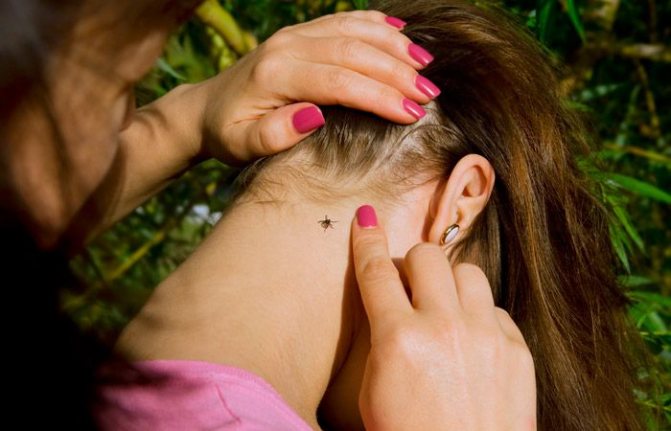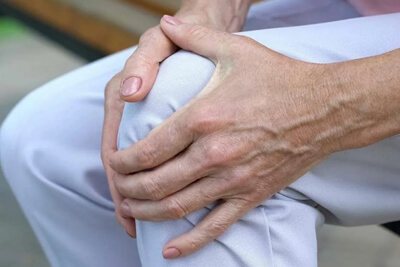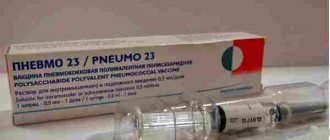Tick-borne borreliosis is a complex and multifaceted disease, sometimes with a vivid and varied clinical picture. There are different opinions among doctors about how to diagnose and treat this infectious pathology. In addition, our population is not sufficiently informed about borreliosis: often people have only a very superficial understanding of tick-borne encephalitis.
Despite people's low awareness of borreliosis, it is one of the most common infections transmitted by ixodid ticks. Every year, from 7 to 10 thousand of our compatriots go to medical institutions where they are given this diagnosis. Unfortunately, many patients are diagnosed with already fairly advanced and severe forms of borreliosis. If left untreated, a person may become disabled or die. As for effective and safe vaccination against the pathogen, it does not yet exist.
Definition and a little history
Lyme disease, or systemic borreliosis, is understood as a disease that has a transmissible, natural focal origin. This pathology most often affects:
- skin;
- joints;
- heart;
- nervous system.
Without proper treatment, the disease often takes a chronic, relapsing form.
The name “Lyme disease” itself has an interesting history. This is the name of one of the small cities in the USA. It was there that doctors in 1975 first recorded several cases of arthritis (both in adults and children) with an atypical course. Two years later, experts established an obvious connection between the disease and ixodid tick bites.
Borrelia, as the causative agent of the infectious process, was isolated and then described in detail by W. Burgdorfer in 1982 (one of the causative agents of infection was named in his honor). Later it turned out that in nature there are five varieties of these pathogenic microorganisms. All of them belong to spirochetes, so they quickly penetrate different parts of the human body.
As for Borrelia strains, researchers count more than a hundred that are common in America, and there are about three hundred around the world. Among them there are Borrelia that are highly resistant to antibiotics, which complicates the treatment process.
Serological diagnosis of the disease was started by doctors in 1984. An interesting fact is that experts developed the first vaccine against borreliosis in 1997, but four years later its use was stopped because it caused serious side effects.
How does the encephalitis vaccine work?
The vaccine contains an inactivated virus. There is no live virus in it, which means it is impossible to get sick. But the inactivated virus is enough for the immune system to recognize it. After the vaccine is administered, the immune system learns to fight the virus, and lymphocytes begin to produce immunoglobulins. To maintain the protective concentration of immunoglobulin for a long time, several doses of the vaccine are required.
Who needs the vaccine?
Vaccination against encephalitis is necessary for persons living, working or planning to travel on vacation to places where tick-borne encephalitis is endemic. You can find a list of such territories on the Rospotrebnadzor website.
When should you get vaccinated?
You need to take care of vaccination in advance. The first ticks are found in the forest at the first warming, already in April. They are most active in May, but the risk of infection remains until early July.
You can be vaccinated against encephalitis throughout the year, but it is necessary to plan vaccination so that at least 2 weeks pass from the moment of the second vaccination before going outdoors. To develop immunity from encephalitis, a minimum of 21-28 days is required - with an emergency vaccination regimen, with a standard vaccination regimen - at least 45 days. You can find out more about vaccination schedules on the website in the “How to protect yourself from ticks” section.
If a person is vaccinated, can he not be afraid of ticks?
The effectiveness of the vaccine against tick-borne encephalitis is about 95%, but it must be remembered that ticks transmit not only encephalitis, but also borreliosis, granulocytic aplasmosis and other infections. Therefore, you should not neglect the rules of bite prevention.
What tests can be used to understand that immunity has been formed?
We recommend taking an IgG antibody test. These are long-term immune memory antibodies that remain in the blood for a long time after vaccination.
Website code P126
. Tick-borne encephalitis Virus (TBEV), quantitative determination of IgG antibodies
LABquest makes laboratory diagnostics accessible and understandable to everyone. You can get a free consultation on the selection and interpretation of laboratory tests from the expert doctors of the Doctor Q service by calling 8-800-700-09-99.
Diversity and danger of Borrelia
As already noted, there are several causative agents of borreliosis. All of them pose a danger to humans, for example:
- borrelia Burgdorferi (named after W. Burgdorfer);
- Borrelia garinii;
- borrelia afzelii.
All of them are microaerophiles and are not easy to cultivate.
The type of disease caused by Burgdorffer's borrelia most often produces symptoms of arthritis. By the way, North America is the place where this particular type of Borrelia is the only one. In turn, Borrelia garinii causes neurological symptoms, and Borrelia afzelii provokes the occurrence of chronic skin diseases. At the same time, the appearance of migratory erythema, which occurs after an ixodid tick bite, is observed in all three variants of the course of borreliosis.
Epidemiological description
The hosts of Borrelia are animals and birds that can be found in the wild, including deer and rodents. Ticks themselves are commonly called carriers of Borrelia. When a tick bites a bird or animal, microorganisms end up in its intestines, where they begin to rapidly multiply, being released into the environment along with the insect's feces.
The number of ticks infected with Borrelia is large, but not all of them can infect humans. The salivary glands of insects do not contain many pathogens, so they cannot always enter the human body. In some cases, tick saliva does not contain Borrelia at all.
In nature, the pathogen constantly circulates like this: from a tick to a wild animal and again to a tick. Such an epidemiological chain may also include a pet:
- sheep;
- cow;
- goat
Other insects that carry Borrelia include horseflies. A person becomes infected if he finds himself in a natural source of the disease. As a rule, these are forests located in temperate climate zones.
Not long ago, experts established a coincidence among those regions where both tick-borne encephalitis and borreliosis occur constantly. In other words, we are talking about different types of tick-borne infections, the geographical distribution of which coincides. Despite the fact that the average citizen of our country is usually poorly informed about borreliosis, its incidence rate significantly exceeds tick-borne encephalitis - from two to four times in Russia. This is a natural focal species of zoonosis, occupying one of the main positions throughout the world.
Borreliosis is seasonal, and the incidence rate begins to increase along with the activity of the ixodid tick. The first patients bitten by infected insects may come to an infectious disease specialist or other doctor in March or April. If the region maintains warm weather, ticks are active until October. As for the peak incidence of borreliosis, it is observed in May and June.
It also happens that the same tick is infected with encephalitis and borreliosis at the same time, so the appearance of a complex mixed infection cannot be ruled out.
Typically, a tick transmits the pathogen to a person or animal through a bite (inoculation). but there are known cases of infection when insect excrement gets on the skin. After this, a person or animal can become infected by scratching the skin. The infection also enters the bloodstream through damage and microtraumas present on the skin.
The maximum risk of borreliosis is:
- for forestry workers;
- from employees of timber industry enterprises;
- from foresters;
- for those who live near forest or park areas.
The lifespan of the ixodid tick is about three years, and the insects are infected by animals or birds that they bite. Ticks live in grass, as well as in low-lying plants or shrubs.
Vaccination against tick-borne encephalitis during the tick-active season is carried out according to the following scheme:
- V1 - first vaccination.
- V2 - second vaccination 14 days after V1.
- RV1 is the first revaccination 1 year after V2.
- RV2-N - second and each subsequent revaccination every 3 years before the tick season.
After 14 days, immunity for this season is formed from the second vaccination against encephalitis tick (V2). Before this period expires, it is recommended to refrain from visiting the natural hearth.
To form long-term immunity (up to 3 years), a third vaccination against tick-borne encephalitis is required after 12 months from V2.
And then, for protection, it is enough to revaccinate every 3 years before the tick season.
The cost of vaccination together with a doctor’s examination is 1,810 rubles.
SIGN UP
38-002-38 (24 hours a day)
ONLINE REGISTRATION
Pathogenetic mechanisms of disease development
The varied symptoms of borreliosis are caused by a number of pathological reactions from the immune system and pathogen antigens. When Borrelia enters the human body, the so-called primary affect appears. This is tick-borne (ring-shaped) erythema, a papular formation on the skin. Next, microorganisms travel through the bloodstream into tissues and organs, where they accumulate in cells. This leads to the appearance of perivascular infiltrates. They include:
- plasma cells;
- macrophages;
- lymphocytes.
The formation of perivascular infiltrates ultimately leads to the appearance of vasculitis and occlusive formations in the vascular bed. The time during which Borrelia is present in tissues can be several years, especially if a person does not consult a doctor in time. Late stages of the disease are characterized by the development of deep pathological processes in the immune system, which often leads to:
- to neuroborreliosis;
- to chronic arthritis.
The immune system usually gives an intense response in the later stages of the disease, especially if the patient’s joints are affected. If treatment was started in a timely manner, the amount of antibodies normalizes during therapy. If, despite successful treatment, they remain in the body for a long time or stubbornly “keep” a high titer, this means that the disease has entered the carrier stage. In this case, clinical manifestations of borreliosis may be absent altogether.
Consequences of tick-borne borreliosis in humans
If the disease is detected early, it can be successfully treated. Stage II and subsequent stages usually occur if:
- Primary symptoms were ignored
- The bite and the symptoms were not logically connected, the poor health was attributed to something else
- Tick attack went unnoticed
The third option occurs less frequently than the first two, since the tick at different stages of its development can feed for up to 8 days in a row before it leaves the donor. It is very difficult for an adult in the modern world not to notice the constant presence of an insect on the body for a week.

Borrelia can penetrate any system of the body, even such as the heart or brain. Any diseases mentioned in the symptoms of stages II and III can be regarded as consequences. In addition to them, any chronic diseases that you had before infection may worsen and problems may arise in the vulnerable systems of the body. Lyme disease can lead to:
- Disabilities
- For psychosis
- Limb atrophy
In particularly severe cases, progressive diseases can lead to death.
The consequences of tick-borne borreliosis during pregnancy will be severe; in this case, in humans, the infection occurs in utero, transmitted from the mother. This can lead to abnormal development, the appearance of severe congenital diseases, abnormalities and death in the near future after birth.
Symptoms and stages of development of borreliosis
The duration of the incubation period of the disease can range from two days to a month. Its average duration is two weeks. Often the infection is asymptomatic, but there are cases with a clear and pronounced clinical picture. Conventionally, borreliosis is usually divided into three stages of the course, but in fact we are talking about different types of manifestation of the disease. The clinic may differ significantly from patient to patient. For example, in some people the first stage of borreliosis is absent altogether. The same is true for its other forms.
Often the pathology gives obvious symptoms only after it becomes chronic. It is for this reason that doctors should be especially careful when examining and treating patients:
- with encephalomyelitis;
- with arthritis;
- with polyneuropathies;
- with any symptoms similar to those of borreliosis.
All patients should be examined for borreliosis in order to exclude or confirm it.
As for the conditional stages of infection development, they may look like this.
In case of a tick bite, we provide all necessary assistance:
- Removing a tick.
- Examination of ticks for carriage of infections.
- Administration of immunoglobulin against tick-borne encephalitis.*
- Selection of therapy for the prevention of borreliosis.
* In clinics at the following addresses: B. Sampsonievsky Ave., 45, st. Lenskaya, 17, st. Shavrova, 26, Staro-Petergofsky Ave., 39.
Anti-tick immunoglobulin is administered to unvaccinated patients no later than the 4th day (96 hours) from the moment of the tick bite.
It is possible to administer anti-tick immunoglobulin in emergency situations 48 hours before leaving for an unfavorable area where contact with the tick-borne encephalitis virus is likely. The protection in this case lasts up to 4 weeks.
Early local manifestations
Afzelius-Lipschütz ring-shaped erythema appears at the site of an ixodid tick bite. It is also called chronic migratory erythema. It looks like one or several round spots, which, growing, can reach from 15 to 20 cm. The erythema itself increases in size, but its center regresses, and over time, the site of the insect bite is clearly marked in the center of the spot. It looks like a reddish dot. The most common locations for bites are the limbs and torso, but sometimes they are found on the face. During the growth process, the edge of the formation sometimes breaks and a strip appears. In shape, it resembles a garland passing through different parts of the body.
Typically annular erythema:
- hot on palpation;
- painful;
- itches and itch;
- has a round or oval shape.
This formation can remain on the skin for a long time, up to several months. After two or three weeks, even without treatment, the erythema sometimes disappears. Sometimes its complete disappearance is observed even two or three days after the tick bite.
With adequate treatment, there is a rapid regression of annular erythema with its complete disappearance after a week or ten days.
When borrelia spread throughout the body through the bloodstream, patients experience a phenomenon in the form of so-called “daughter erythema”. If we compare them with the first formation, they are much smaller and have no traces of an insect bite.
Intoxication at this stage of the disease can manifest itself in different ways. Sometimes erythema is the only symptom of the disease or is absent altogether (if we are talking about a latent form of borreliosis). However, clinical cases with severe manifestations of intoxication are also not uncommon. In patients:
- low-grade or high temperature (sometimes up to 40C);
- pain in muscles and joints;
- headaches;
- nausea, chills;
- severe weakness;
- stiff neck;
- enlargement of regional lymph nodes close to a tick bite.
At this stage of the disease, there may be no antibodies to microorganisms in the blood, but examinations should be carried out regularly to prevent possible complications that may arise much later.

Late stage of the disease
After six or more months after the tick bite, the acute course of borreliosis becomes chronic . At this stage the following are already observed:

- advanced arthritis (joint damage);
- irreversible damage to the skin on the extremities: cyanotic erythema, thinning and destruction of the skin, pigmentation disorders, etc.;
- persistent neurological syndromes and brain disorders;
- regular muscle pain and headaches, etc.
Lyme disease (borreliosis) brought to such an extent is very difficult to treat . As a rule, it is accompanied by long-term use of antibiotics and rarely leads to complete healing . The side effects of the disease remain for the rest of a person’s life. Therefore, we note once again that it is better not to bring the infection to such a stage of development, but to seek proper help in time .
Stage of early borreliosis (disseminated form)
The pathogen penetrates the human nervous system through the blood and lymph flow, resulting in severe symptoms of damage to various organs and systems. Most often this occurs in the fourth or fifth week of illness. If Borrelia affects the nervous system, it is expressed as:
- serous meningitis;
- neuritis of cranial nerves;
- radiculoneuritis.
When the heart and blood vessels are damaged, the following are observed:
- pericarditis;
- myocarditis;
- blockade (due to disturbances in the conduction system of the heart).
In many patients, borreliosis is “masked” as ARVI or influenza, manifesting itself as weakness, low-grade fever, fever and muscle pain. Skin rashes in the disseminated form of borreliosis can manifest themselves as:
- secondary erythema. The locations of the rashes are the palms, and the erythemas themselves look like capillaritis or urticarial formations. Sometimes benign cutaneous lymphocytoma (Spiegler's) also occurs;
- symptoms of meningitis. At the stage of erythematous formations, they are not significantly expressed, but when several weeks have passed since the onset of the disease, more pronounced signs of irritation of the meninges can already be observed. At the same time, ring-shaped erythema, which is the main “marker” of the disease, already disappears. When it comes to serous meningitis, patients complain of headaches, photophobia, vomiting and nausea. An objective examination shows muscle rigidity in the occipital area;
- symptoms of encephalitis. About a third of patients demonstrate them. These are attention and sleep disorders, as well as increased nervous excitability, accompanied by emotional disorders;
- symptoms of cranial nerve neuritis. Characteristic of more than 50% of patients - with damage to the seventh nerve pair. Frequent symptoms: paresis of facial muscles, tingling or numbness, pain in the ears and jaw. Less commonly, other pairs of cranial nerves are affected. Sometimes the peripheral nervous system is involved in the pathological process with manifestations of radicular syndrome and sensory disorders in different parts of the spine.
This form of the disease is also characterized by a neurological disorder in the form of Bannwart syndrome. It manifests itself as serous meningitis and damage to the nerve roots in the cervical and thoracic spine.
The disappearance of neurological symptoms is usually observed after a month, but most often doctors note its recurrent course with subsequent chronicity of the process. It is important for clinicians to remember that neurological symptoms in borreliosis can manifest in the complete absence of general symptoms of an infectious disease and annular erythema.
The fifth week of illness is sometimes accompanied by cardiac dysfunction (this is about 8% of clinical cases). These are pain and discomfort in the heart area, arrhythmia. In some cases, the cardiogram shows different degrees of blockade with diffuse myocardial damage. Pericarditis or myocarditis are common. Symptoms last for several days, but can last up to one and a half months, with muscle, bone or joint pain.
Symptoms of tick-borne borreliosis in humans
The symptoms of tick-borne borreliosis in humans, the consequences and methods of treating the disease directly depend on which of these forms is current for the person at the moment. Manifestations of each stage can occur in arbitrary combinations, not necessarily simultaneously.
Stage I
- Temperature +38, sometimes higher
- Chills
- Headache
- Weakness in the body
- Fast fatiguability
- Less commonly, conjunctivitis
- Hives
- Nausea, vomiting
- Pain in the liver area
- Almost always - the appearance of migratory ring erythema

Erythema appears as a red ring around the bite, gradually increasing in size.
Stage II
- Meningitis
- Severe fatigue
- Chronic fatigue
- Sleep problems
- Memory problems
- Nerve palsy
- Neuritis
- Lymphocytoma
- Meningoencephalitis
Stage III
- Arthritis in severe forms
- Polyadenitis
- Vasculitis of cerebral vessels
- Osteoporosis
- Scleroderma
- Acrodermatitis
The intensity and nature of symptoms depend on the individual characteristics of the body, immunity and health status.
Important!
If you notice any possible signs of tick-borne borreliosis, immediately seek help from a doctor to rule out or confirm the infection and, if necessary, promptly begin treatment. The sooner you find out that you have been infected, the easier it will be to cure borreliosis and the less harm it will cause to your body.
Late form of chronic borreliosis
These are joint lesions that appear approximately two months after the tick bite. There are cases when joint pain begins to manifest itself even after a year or two. The stage is characterized by inflammatory processes in the knee joints, and the localization is most often one-sided. There are also cases of polyarthritis.
Recurrence of all arthritis due to borreliosis can last for years, with the disease becoming chronic. Relapses and remissions in this case are typical, with damage to the bone and cartilaginous elements of the joints. Thus, we are talking about an “advanced”, recurrent form of borreliosis in the form of arthritis with typical and sometimes severe symptoms:
- destruction of cartilage tissue;
- osteoporosis;
- other degenerative changes.
Skin phenomena can also manifest themselves - for example, in the form of benign lymphocytomas. These are very dense formations with a bright crimson color. They are dense, can be painful when palpated and look like small infiltrates, localized in the area of the earlobe or mammary glands in women. Lymphoma can persist for a long time, for many years.
Another skin disease that occurs in late forms of chronic borreliosis is acrodermatitis. This is an atrophic lesion of the skin, characterized by bluish-red spots. A typical place for their localization is the bends of the arms and legs. The spots grow, often merge and tend to become inflamed. Over time, the skin atrophies where the spots form, and it becomes like tissue paper.
In neurological forms of the disease (neuroborreliosis), the symptoms manifest themselves as polyneuropathy and encephalomyelitis. In this case, the course of encephalomyelitis often resembles multiple sclerosis with mental disorders in the form of disturbances of attention, memory and speech functions. Polyneuropathies are characterized by distal paresthesia and radicular syndrome of various localizations.
With chronic Lyme disease, a person may partially or completely lose the ability to work.
What is the treatment for borreliosis?

Further treatment continues with either the same doxycycline or tetracycline and other antibiotics. The choice of drug is made by the attending physician, depending on the stage of development of the disease and damage to certain organs. Self-medication is prohibited here!
Additionally, physiotherapeutic treatment, medications that reduce intoxication of the body, analgesics, anti-inflammatory drugs, vitamins, etc. may be prescribed. It all depends on the general picture of the course of the disease and specific symptoms.
Methods for diagnosing Lyme disease
The diagnosis can be made early, based on the external manifestations of the disease in the form of annular erythema and anamnesis. In some cases, patients themselves talk about tick bites, so the preliminary diagnosis in such situations is beyond doubt. However, sometimes a tick bite remains unnoticeable to humans, partly because the insect, when biting a living creature, releases an anesthetic. It is in such situations that the disease often develops unnoticed, manifesting itself with dangerous neurological and other symptoms many years later.
Laboratory tests help confirm or exclude the diagnosis. At the same time, studies in the form of bacterial cultures and histology are not sufficiently informative, as is PCR. Serological methods are used to help specialists, with the detection of antibodies to Borrelia.
People who have had borreliosis do not have lifelong immunity, so the risk of re-infection should not be ruled out.
How to remove a tick?
The tick should not be smeared with oil or cream, damaged, pressed, or dragged by force.
To remove a tick, carefully grab the area at the base with tweezers, a thread tied in a knot, or fingers wrapped in clean gauze. Holding the tick strictly perpendicular to the surface of the bite, its body is carefully rotated around its axis until it comes completely to the surface. The wound should be treated with iodine or alcohol, and your hands should be washed thoroughly with soap.
If the tick's head remains in the wound, you must definitely remove it - remove it with a needle, like a splinter. The skin should be washed with soap and water.
It will be interesting:
- Vaccinations have saved 37 million children's lives since 2000.
- Doctors found out the patient's diagnosis only when she was bitten by a tick
- Photo project: “invisible” diseases






